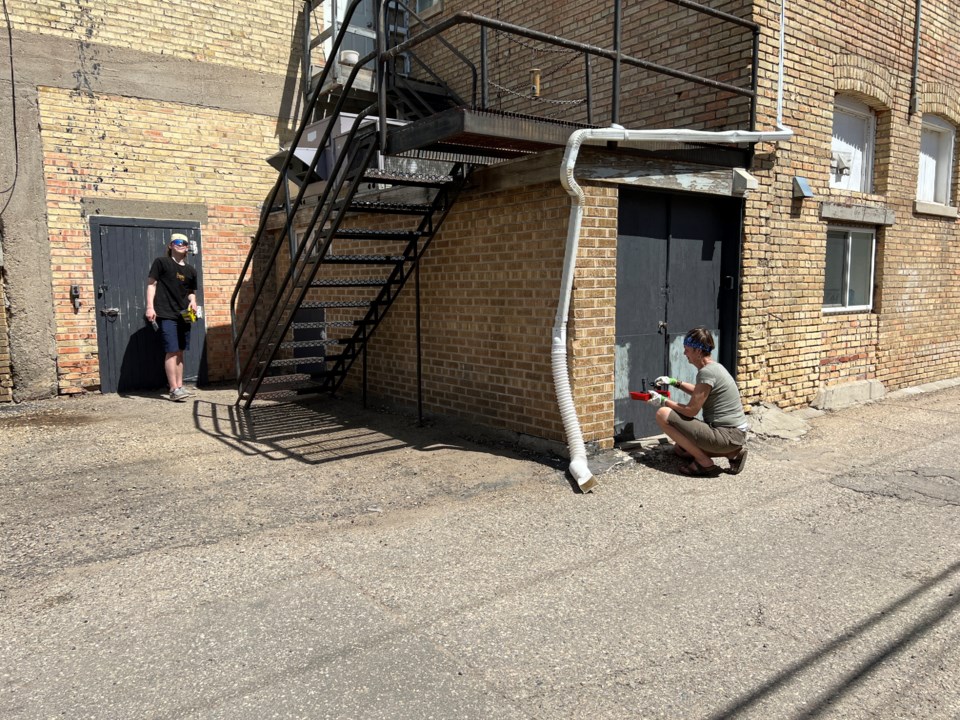The downtown revitalization in Estevan has been a big topic for many of us for a while. Some cheer for it, others consider it a waste of money. But I feel it goes well beyond the construction on Fourth Street.
As a person of European descent, who's been residing in Canada for almost a third of my life now, I've always missed the old world's beauty. I grew up in a city built over 300 years ago according to a plan, focused on visual harmony, aesthetics and beauty. People built streets and neighbourhoods so that they would look attractive and pleasing.
If you've had a chance to travel to Europe, you'd probably agree that even small communities there appear beautiful and feel welcoming – something you don't get to experience as often in hardworking rural Canada. Many things are built here to serve the immediate needs of communities, without aiming at pleasing someone's eye.
As the province was being built, things had to be practical. Full stop.
But societies, no matter where we are, are changing. To me, it seems that the need for beauty may have come into the equation here as well.
The downtown revitalization project is currently underway. No one can guarantee that a different look will 100 per cent change things and only time will show what the use of the federal grant will mean for Estevan and its people. But the beautification chain reaction, which was started by the introduction of the Fourth Street revitalization idea and continued by volunteers working hard to bring the Fifth up to date now, tells me that the willingness to see the hometown blooming goes beyond the passive use of federal funds.
Led by Gale Tytlandsvik, a local artist and beautification enthusiast, the effort to transform Fifth Street has garnered attention and support from the community. The donor group's contribution, combined with the efforts of volunteers, and supported or even just green-lighted by the property owners, has made a substantial difference.
The initial volunteer project didn't assume any engagement from the Fifth Street businesses, but it sounds like some of them got on board with investing what they could into making their part of downtown look more attractive.
Of course, Gale's vision extends beyond mere cleanup; it includes adding murals and doing all they can to make things look great. (Anyone who knows her wouldn't have any doubts that once she gets onto something, she'd go above and beyond to make it "look pretty".)
It's almost like a rule: changes result in more changes, be they positive or negative. The broken windows theory in policing links disorder and incivility within a community to subsequent occurrences of serious crime.
In other words, if windows on many buildings in the neighbourhood are broken, more will be broken soon and the level of other kinds of crimes will be up as well. But if you fix the neighbourhood, and pour some love and care into it, it will start generating more positive activities and developments in return.
I noticed it earlier with the city's business front incentives. I understand that sometimes it's really hard for small businesses to invest in upgrading their business fronts. But once a neighbouring business gets a facelift, others start looking into options to look more modern and attractive. I wish there were solid stats on the changes it creates, as I feel that places that appear more welcoming, indeed see more foot traffic and, thus, more revenue. Does it mean 100 per cent success? Of course not. But it'd be one of the elements.
We naturally look for beauty. Choosing something or someone beautiful is a part of our ancient instincts, and even when we consciously think that we don't care about outer appearance, we still use it to navigate through life.
I'd say Estevan's revitalization effort exemplifies the concept of a "beautification chain reaction." The reaction starts with a few dedicated individuals and, through their passion and hard work, inspires others to join. This transformation is not merely about aesthetics; it's about community spirit and pride. When residents see their environment improving, they become more likely to contribute, creating a positive feedback loop that benefits everyone.
And altogether it suggests that Estevan is ready for this change.
The projects' success hinges on the community's collective effort. The financial and physical support from community members has been instrumental in Fifth Street's progress, but I believe the area, as well as other parts of the city, are likely to see more changes. This chain reaction of beautification highlights a shift in priorities, where the desire for a pleasing environment is recognized as one of the essential aspects of community development.
After all, the downtown revitalization in Estevan is more than a cosmetic upgrade. Hopefully, it results in more financial success for the businesses and the community in general, thus serving as a powerful reminder that when we invest in our environment, we invest in ourselves.

.png;w=120;h=80;mode=crop)


